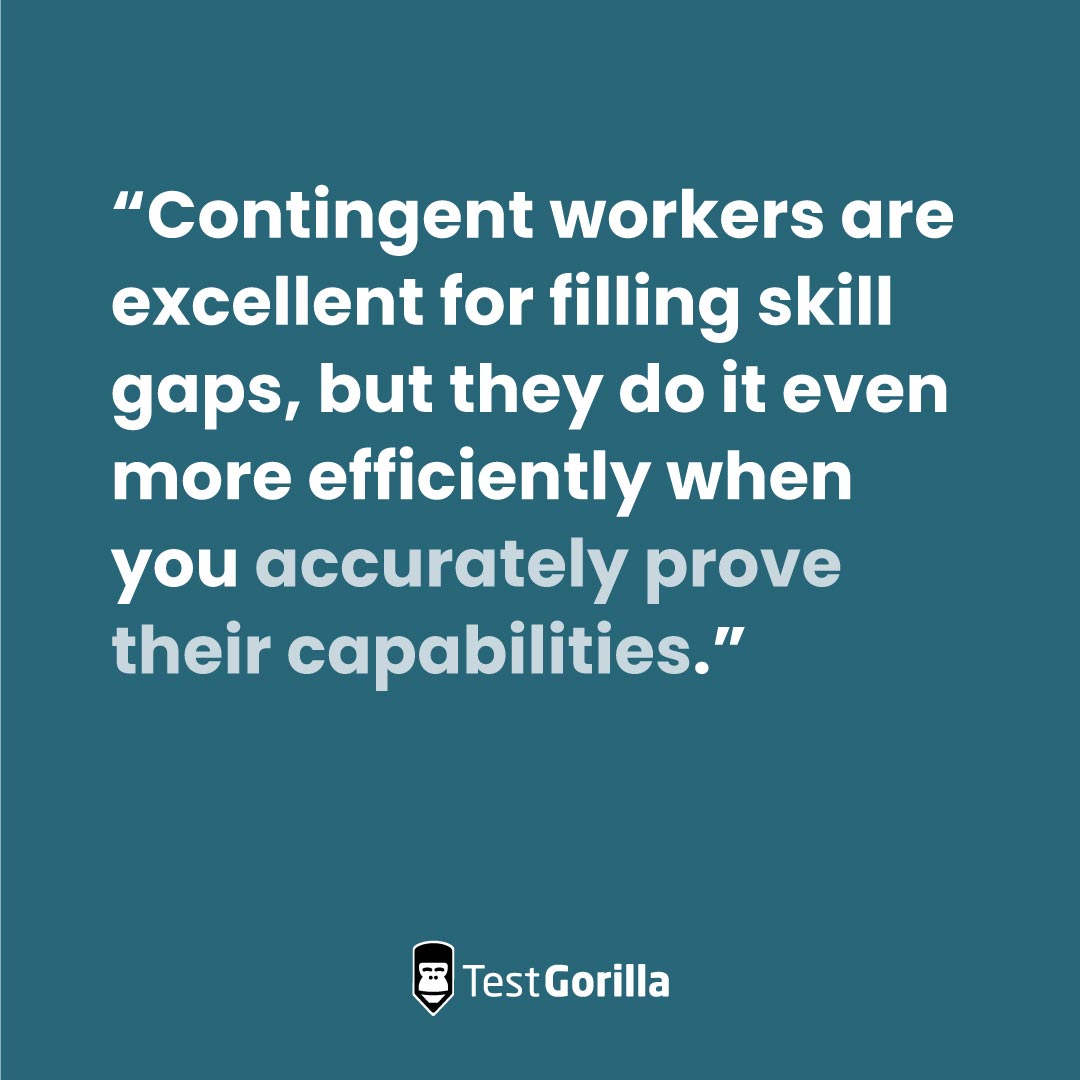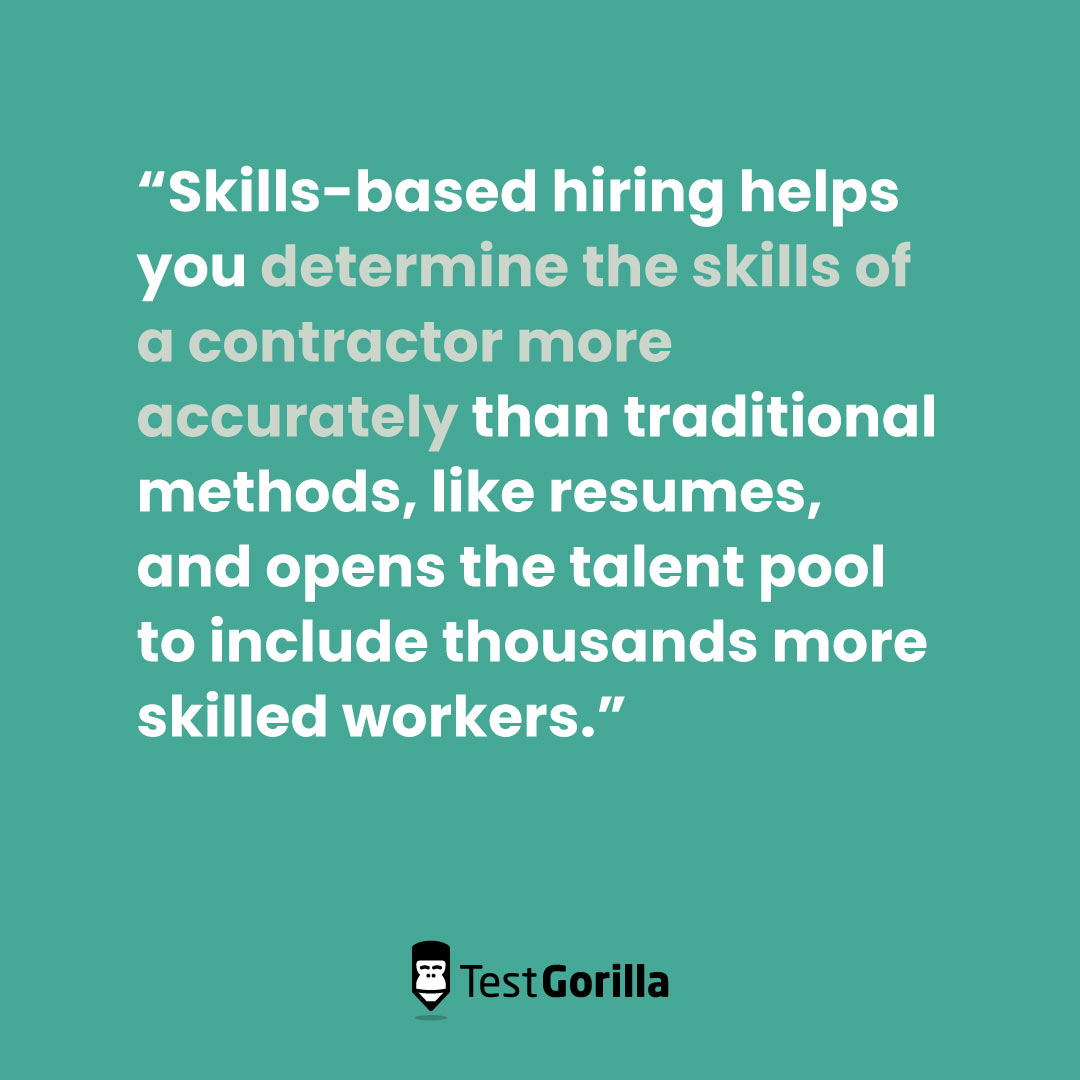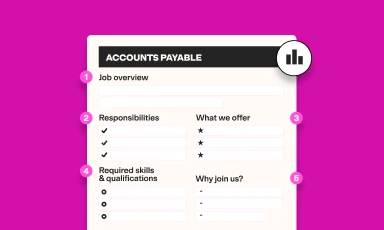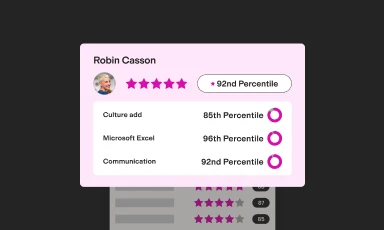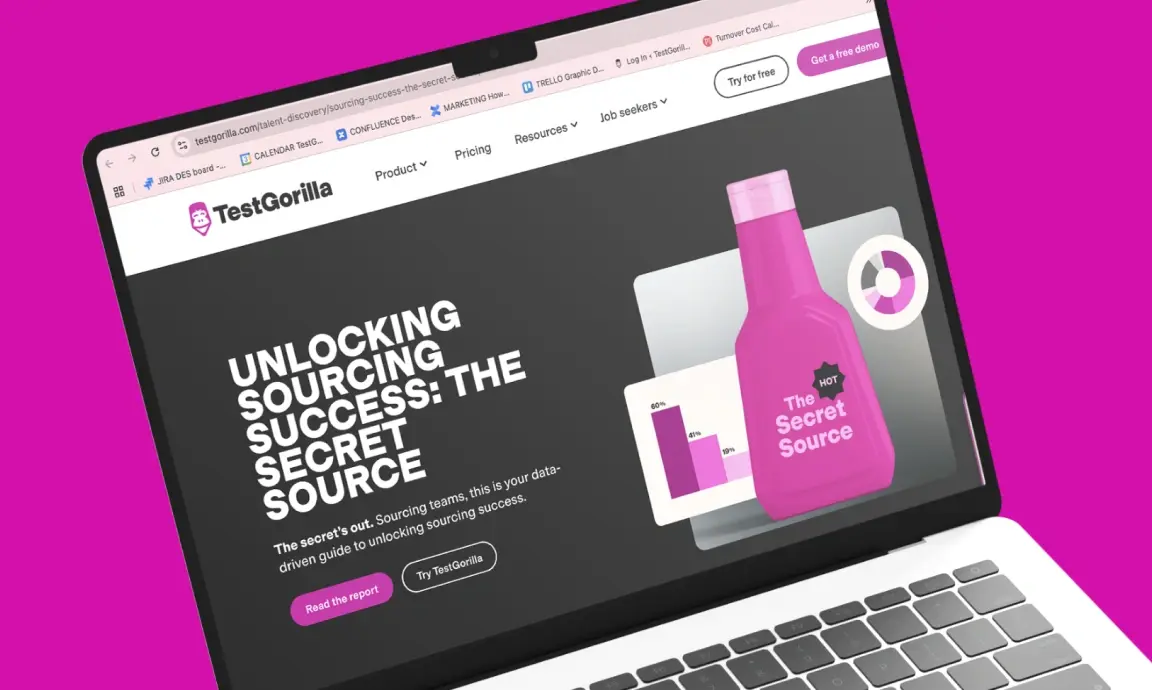How to use skills-based hiring for effectively recruiting and managing contingent workers
Table of contents
- Table of Contents
- What’s a contingent worker, and how are they different from traditional employees?
- Why is skills-based hiring so crucial in hiring contingent roles?
- How to use skills-based hiring to effectively hire and manage a contingent workforce
- Adopt skills-based hiring and manage your contingent workforce with ease
- Sources
The Great Reshuffle, talent shortages, economic difficulties – HR professionals need solid strategies for securing the right talent during times like these.
This calls for unique strategies, such as promoting internal mobility, prioritizing learning and development, and looking for stellar contingent workers.
Maybe you can combine all three using skills-based hiring?
According to TestGorilla’s State of Skills-Based Hiring report, 76% of companies used skills-based hiring in 2022 – and it’s easy to see why.
Skills-based hiring enables you to accurately assess the skill sets of contractors, encourage their continuous improvement and development, and move them into new and different roles.
Contingent workers are excellent for filling skill gaps, but they do it even more efficiently when you accurately prove their capabilities. They may even end up joining as full employees.
Let’s take a look at the benefits of using skills-based hiring practices to recruit your contingent workers, as well as how to use them effectively.
Table of Contents
What’s a contingent worker, and how are they different from traditional employees?
Why is skills-based hiring so crucial in hiring contingent roles?
How to use skills-based hiring to effectively hire and manage a contingent workforce
✅ Adopt skills-based hiring and manage your contingent workforce with ease
What’s a contingent worker, and how are they different from traditional employees?
A contingent worker is a person who works for a company in a nontraditional capacity. You usually hire them for a specific time or project.
Contingent workers are also known as contractors, freelancers, and project-based workers.
Here’s a quick comparison between contingent and traditional workers:
Contingent workers | Traditional employees |
Receive no benefits, instead adding an extra 10% cost to account for it | The company offers benefits and pensions |
Self-motivated and self-directed with little guidance from company seniors | Rely on managers for direction and guidance |
Don’t require training, only project-specific information | Require training and traditional onboarding |
Have more autonomy over when and where work is done | Follow company policies on where and how work is done |
There are quite a few reasons to hire contingent workers:
To work on a single, one-off project
To widen the talent pool and get easier access to on-demand labor
To fill seasonal roles during busy times
To get access to a rapidly expanding talent pool
The contingent workforce is growing more each day, especially since the pandemic. The contingent worker economy grew by 33% in 2020 alone.
Currently, 35% of Americans engage in contract work, and it’s estimated that half of the U.S. population will be contingent workers by 2027.
For more insights, read our guide to hiring contingent workers, including the pros and cons and a step-by-step guide for recruiting them.
The best insights on HR and recruitment, delivered to your inbox.
Biweekly updates. No spam. Unsubscribe any time.
Why is skills-based hiring so crucial in hiring contingent roles?
When you’re hiring contingent workers, it’s essential to prioritize skills and capabilities over degrees and education.
Let’s go over the top reasons why skills-based hiring is imperative for hiring great contingent talent.
Here’s a brief overview:
Offers opportunities to contingent workers with nontraditional backgrounds
Accurately assesses skills
Helps reduce redundancies
Uses personality tests to find a great culture add
Streamlines the process for a great time-to-hire
Many contingent workers have nontraditional backgrounds
Countless contingent workers have nontraditional work backgrounds.
Popular contractor roles include web design, content writing, and programming. These are commonly taken up professionally after doing them for family and friends for years, or after attending a boot camp.
This especially applies to individuals using contingent work as a “side hustle.” They most likely have life or hobby experience and not a lifetime of work and educational history.
Skills-based hiring reduces reliance on work history and educational background, helping you open your talent pool to these excellent candidates.
Skills-based practices focus on capability over work history by using skills tests to verify skills – not resumes. We talk about this more in our article on why skills-based hiring delivers the best candidates.
Expanding your reach to nontraditional candidates not only expands your talent pool, but it also opens the door for candidates who deserve a shot at a great opportunity.
Accurately assesses skills
Relying on resumes and a candidate’s background isn’t an accurate indicator of their capability, and this is even more true with contingent workers.
References and resumes can be iffy and hard to check with contract workers. Skills-based hiring enables you to truly know and verify their skill sets with objective, accurate skills tests.
According to TestGorilla’s State of Skills-Based Hiring report, 58% of respondents said that skills-based assessments were more effective than resumes in identifying talented candidates.
A further 55% of respondents agreed skills tests were good predictors of job performance.
For example, you could use these skills tests for hiring a graphic designer:
Adobe Photoshop for Designers test
Adobe InDesign test
Attention to Detail (visual) test
UX/UI Design test
Culture Add test
Browse these tests and many more in our test library.
You can then view the results of the assessment and compare them between candidates. The results are displayed objectively in percentages according to your own scoring benchmarks.
Contingent workers might have references you can never seem to get a hold of or confusing, unreliable resumes. But with skills tests, you can accurately evaluate their skills and hire the best one for your role.
Helps reduce redundancies
Sometimes hiring contingent workers can bring redundancies. You might be hiring a contractor to complete a job that an internal worker could be doing for a lot less cost.
How do skills-based practices help this issue?
Use skills tests to conduct a thorough skills-gap analysis to know exactly which skills you need and which skills your workforce already possesses.
Analyzing the current skill sets your employees and teams possess helps you know where you stand with skills. This enables you to hire the right workers, use current employees where possible, and even predict necessary future positions.
Once you know which skills you need, hiring your contingent workers with the same tests you used for your skills-gap analysis helps you verify that the individual has the exact skills you need.
We’ll talk about conducting a skills-gap analysis in-depth later on in this blog.
Uses personality tests to find a great culture add
One of the biggest risks when hiring contract workers is the potential to disrupt your company culture.
It can be a large detriment to employee morale if you hire a contingent worker who has vastly different motivators – or worse, brings a toxic attitude with them.
It matters to the contractor, too. According to one survey, contingent workers rated a positive culture, diversity and inclusion, and a supportive environment above compensation when considering a possible gig.[1]
There’s a risk of a culture clash, but culture and personality tests help ensure the new worker has a compatible personality, positivity and empathy, and values that align with your organization.
Personality, soft skills, and cultural potential are essential to finding a good hire, and traditional hiring methods like resumes have no way to evaluate them.
Our Culture Add test stands out as one of the most important tests in our library. This test throws away the traditional idea of “culture fit” and instead finds candidates who have similar but unique values and adds them into your culture to promote diversity.
Streamlines the process for a great time-to-hire
Hiring managers tend to turn to contingent workers to improve time-to-hire and fill a role fast. But it gets better: Skills-based hiring improves time-to-hire, too.
Many traditional methods slow the hiring process down, like scanning dozens of resumes and manually assessing language proficiency.
Revolut, a British-Lithuanian financial services provider, improved their time-to-hire by 40% after adopting skills-based hiring practices and TestGorilla’s skills tests.
Skills-based hiring helps you cut out unnecessary processes and screening practices to hire great contingent workers and fill roles quickly. This could be temporary until you find a permanent employee, or the contingent worker could eventually become a full-time employee.
How to use skills-based hiring to effectively hire and manage a contingent workforce
We’ve covered the “why,” so it’s time for the “how.”
Skills-based hiring is the best method to effectively manage your contingent workforce, but you need to know the strategies and tools that go into it.
Here’s a quick summary:
Perform a skills-gap analysis to find exactly what you need
Build assessments with the right skills tests
Use language proficiency tests to reach top talent
Prioritize upskilling and reskilling
1. Perform a skills-gap analysis to find exactly what you need
First, it’s essential to discover which skills you need and which talent you should hire. This means assessing your current workforce’s capabilities through a skills-gap analysis.
A skills-gap analysis is an HR method to determine which skills and capabilities are missing in their workforce so they can develop an actionable plan to address them.
Let’s run through a basic skills-gap analysis:
Speak with leaders to determine business goals
Identify short- and long-term goals
Determine the skills you need to achieve these objectives
Conduct individual skills gaps analyses and team-wide skills gaps analyses using skills tests
Build a plan to address these skills gaps
This helps you zero in on the exact skill sets you need before you start hiring contractors so you don’t run into any redundancies (like we mentioned above).
A skills gap analysis also tells you if your current workforce has the skills you need – and having a current employee complete the work is much faster and cost effective than hiring a new contingent worker.
After you know what skills you need, use the same skills tests during the hiring process to ensure consistency. That way, the same skills tests that determined your team was lacking Google Ads skills can tell you if your marketing candidates have the right capabilities.
To read our whole guide on the topic, check out our article on how to use skills tests to address internal skills gaps.
2. Build assessments with the right skills tests
Now that you’re ready to hire the ideal contract worker, you can put together a pre-employment assessment to determine their skills.
Each assessment is going to be unique depending on the role, down to the soft skills and personality tests.
You aren’t on your own. When creating an assessment with TestGorilla, you can input the job role you’re recruiting to get test recommendations for inspiration.
Let’s take a look at a few example skills assessments for common contingent roles:
Content Writing | Web Design | Taxes and Accounting |
SEO Copywriting testGoogle Docs testAttention to Detail testProblem-Solving testCulture Add test | CSS testUX/UI Design testCritical Thinking testSpatial Reasoning testMotivation test | Intermediate Math testAccounting testNumerical Reasoning testBusiness Ethics & Compliance testDISC test |
For example, when hiring a web designer, using the UX/UI Design test should be your number one option. But you also want to complement it with other tests to get a more holistic understanding of your candidates’ skills and traits. That’s why you should also include CSS, Critical Thinking, Spatial Reasoning, and Motivation tests.
You can browse these tests and many more in our test library.
These assessments all use multi-measure testing, a method that assesses role-specific skills, cognitive ability, and personality traits.
A study on the subject showed that multi-measure testing has the highest predictive validity and predicts job performance better than every other hiring practice, including reference checks and job experience.[2]
These assessments help you determine your contingent workers’ real capabilities without having to rely on resumes and reference checks, which can be problematic or even impossible with some contractors.
3. Use language proficiency tests to reach top talent
Because of the pandemic and the need for remote work, we’re extending our hiring efforts beyond our physical locations more than ever.
This particularly applies to contingent workers, and some of the best ones are hired from across borders and even oceans. Millions of freelancers work in different regions and countries, which means they may not natively speak your language, although they’re fluent.
Too many traditional job descriptions ask for “native language speakers only.” This is illegal in some areas like the UK, but many companies still do it. This requirement is also narrowing your talent pool and closing your doors to amazing contractors.
Using language tests helps hiring managers check for language proficiency instead of opting for native speaker requirements.
Here’s a handful of language tests from our library:
English (intermediate) test
English (proficient) test
Mandarin (intermediate) test
Dutch (proficient) test
Spanish (upper intermediate) test
These tests enable you to include amazing candidates in your search.
For example, Revolut (mentioned above) used TestGorilla language tests to assess candidate language abilities quickly and efficiently, zeroing in on the best candidates regardless of their backgrounds.
4. Prioritize upskilling and reskilling
Skills-based hiring has a tight connection to learning and development.
It prioritizes skills and capabilities, which naturally promotes continuous improvement in your company, your traditional employees, and your contingent workforce.
A focus on learning and development helps you manage a contingent workforce in a few key ways:
Promotes their growth and improves their skills. This helps you find contractors that check nearly every box and then fill in the rest with training.
Makes your company an attractive place for contractors. One study showed 48% of workers would switch jobs if offered upskilling opportunities.
Helps you transition contractors into other roles once their initial project finishes. Let’s talk about this one in depth.
This last point is important. A development and growth mindset helps you move contingent workers into permanent roles, which lowers costs and retains top performers. This could be a more permanent role they’re currently in, or even a separate role they align with well.
This is the difference between upskilling and reskilling, and both strategies help you retain top talent and improve performance in your organization.
Upskilling may be a bit more traditional, but reskilling can be a powerful tactic in your people strategy. Business leaders in 2020 predicted around 40% of their employees would require reskilling in the near future.
Adopt skills-based hiring and manage your contingent workforce with ease
The contingent workforce is growing and contains millions of talented individuals with unique skills, and you can tap into that talent when you use the right strategies.
Skills-based hiring helps you determine the skills of a contractor more accurately than traditional methods, like resumes, and opens the talent pool to include thousands more skilled workers.
To read more on this subject, check out our complete guide to project-based hiring.
Try our Algorithms for Software Engineering test to evaluate the knowledge of your next freelance software developer.
Sources
“2022 State Of The Contingent Workforce Report: Flextrack”. (October 26, 2022). Flextrack. Retrieved March 23, 2023. https://www.flextrack.com/2022-state-of-the-contingent-workforce-report-flextrack/
Martin, Whitney. (August 27, 2014). “The Problem with Using Personality Tests for Hiring”. Harvard Business Review. Retrieved March 23, 2023. https://hbr.org/2014/08/the-problem-with-using-personality-tests-for-hiring
You've scrolled this far
Why not try TestGorilla for free, and see what happens when you put skills first.


